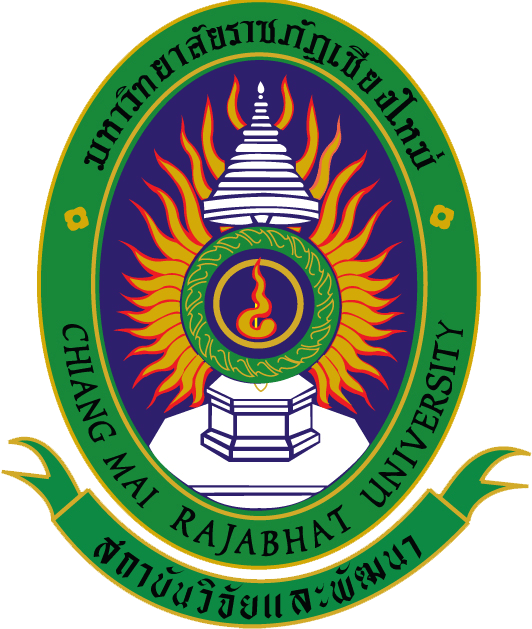
ระบบสารสนเทศงานวิจัย สถาบันวิจัยและพัฒนา มหาวิทยาลัยราชภัฏเชียงใหม่
Research Information System(RIS)
การประยุกต์ใช้เทคโนโลยีภูมิสารสนเทศในการประเมินความเสี่ยงเชิงพื้นที่ต่อการเกิดอุทกภัยในพื้นที่นอกเขตชลประทาน อำเภอสันป่าตอง จังหวัดเชียงใหม่
อาจารย์วรวิทย์ ศุภวิมุติ
คณะมนุษยศาสตร์และสังคมศาสตร์
คำสำคัญ :
เลขทะเบียน :
1100-62-HUSO-NRCT
บทคัดย่อ
งานวิจัยนี้ มีวัตถุประสงค์3 ประการ ได้แก่ เพื่อวิเคราะห์รูปแบบเชิงพื้นที่และเชิงเวลาของการ เกิดอุทกภัยในอำเภอสันป่าตอง จังหวัดเชียงใหม่ เพื่อวิเคราะห์พื้นที่เสี่ยงต่อการเกิดอุทกภัย และเสนอ แนวทางการรับมือต่อการเกิดอุทกภัยในพื้นที่เกษตรกรรม ศึกษาโดยใช้ระบบสารสนเทศภูมิศาสตร์ วิเคราะห์ข้อมูลพื้นที่น้ำท่วมที่เกิดขึ้นในอดีต และนำมาวิเคราะห์หาความอ่อนไหวต่อการเกิดน้ำท่วมด้วย วิธีการอัตราส่วนความถี่และวิธีอัตราส่วนความถี่สัมพัทธ์ โดยใช้ปัจจัยในการวิเคราะห์ 10 ปัจจัย ได้แก่ ความสูงภูมิประเทศ ความลาดชัน ความโค้งภูมิประเทศ ดัชนีความชื้นภูมิประเทศ ปริมาณน้ำฝน ระยะห่างจากแม่น้ำ ความหนาแน่นทางน้ำ การระบายน้ำของดิน ความหนาแน่นถนน และการใช้ที่ดิน และทำการประเมินประสิทธิภาพของการวิเคราะห์และนำผลวิเคราะห์ความอ่อนไหวนำมาใช้ประเมิน ความเสี่ยงของพื้นที่ชุมชนและสิ่งปลูกสร้างและพื้นที่เกษตรกรรม ผลการศึกษาพบว่า อำเภอสันป่าตองมีพื้นที่ที่เคยเกิดน้ำท่วม 59.49 ตารางกิโลเมตร จำแนก เป็นน้ำท่วมในเขตชลประทานร้อยละ 67.45 และน้ำท่วมนอกเขตชลประทาน ร้อยละ 32.55 ตำบลที่มีน้ำ ท่วมมากที่สุด ได้แก่ ตำบลสันกลาง ตำบลบ้านแม และตำบลยุหว่า หากพิจารณาเฉพาะพื้นที่นอกเขต ชลประทาน ตำบลทุ่งสะโตก เป็นตำบลที่มีน้ำท่วมมากที่สุด ผลการวิเคราะห์พื้นที่อ่อนไหวด้วยวิธี อัตราส่วนความถี่ (FR) พบว่ามีพื้นที่อ่อนไหวระดับสูงมาก ร้อยละ 24.68 ระดับสูง ร้อยละ 41.51 ระดับ ปานกลางร้อยละ 20.98 ส่วนวิธีการอัตราส่วนความถี่สัมพัทธ์(RFR) ให้ผลลัพธ์พื้นที่อ่อนไหวระดับสูงมาก ร้อยละ 28.20 ระดับสูงร้อยละ 54.35 ระดับปานกลางร้อยละ 8.01 เมื่อประเมินประสิทธิภาพของการ วิเคราะห์ด้วยวิธีพื้นที่ใต้เส้นโค้ง (AUC) พบว่า วิธีการอัตราส่วนความถี่สัมพัทธ์ (RFR)RFR มีค่าอัตรา ความสำเร็จร้อยละ 88.47 ส่วนวิธีการ FR ซึ่งมีค่าเป็นร้อยละ 79.17 และการประเมินอัตราการคาดการณ์ พบว่าวิธี RFR อยู่ที่ร้อยละ 88.86 ส่วน วิธีการ FR อยู่ที่ร้อยละ 79.29 ผลการวิเคราะห์ยังพบว่า พื้นที่เกษตรกรรมประเภทนาข้าวและพืชไร่ เป็นพื้นที่เสี่ยงเนื่องจาก อยู่ในพื้นที่อ่อนไหวระดับสูงและสูงมาก ส่วนพื้นที่ชุมชนและสิ่งปลูกสร้างส่วนใหญ่อยู่ในพื้นที่อ่อนไหว ระดับสูง โดยเฉพาะบริเวณตอนกลางและตะวันออกเฉียงเหนือของอำเภอ นอกจากนี้ยังพบว่าชุมชนริม แม่น้ำหรือชุมชนในพื้นที่ลุ่มน้ำตามแนวแม่น้ำขานมีความเสี่ยงค่อนข้างสูงต่อการเกิดน้ำท่วม การรับมือกับปัญหาน้ำท่วมควรมีการบูรณาการทั้งหน่วยงานราชการส่วนกลาง องค์กรปกครอง ส่วนท้องถิ่น ชุมชน และองค์กรสาธารณกุศล โดยยึดหลักวงจรการจัดการความเสี่ยงจากสาธารณภัย ที่ ครอบคลุมทั้งระยะก่อนเกิดเหตุการณ์ ระหว่างตอบสนองต่อเหตุการณ์ และระยะหลังเกิดเหตุการณ์ และ ผลการศึกษานี้สามารถนำไปประกอบการพิจารณาวางแผนปฏิบัติการป้องกันและบรรเทาสาธารณภัยใน อนาคตได้
Abstract
This research has three objectives: 1) to analyze spatial and temporal patterns of flood events in San Pa Tong District. Chiang Mai Province 2) to analyze flood risk area and 3) to present guidelines for coping with flooding in agricultural areas. This study applied GIS to analyze historical flood data which were analyzed for flood susceptibility area using Frequency Ratio ( FR) and Relative Frequency Ratio ( RFR) methods comparatively. Ten flood causative factors were analyzed including elevation, slope, curvature, topographic wetness index (TWI) , rainfall, distance from the river, stream density, soil drainage, road density and land use.The results were evaluated the and used to assess the flood risks of built up and agricultural areas. The study found that San Pa Tong District had the flooded area for 59.49 sq.km. classified as 67.45% in irrigated areas and 32.55% for non-irrigated area. The flood mostly occurred inSan Klang sub-district, Ban Mae sub-district and Yu Wa sub-district, respectively. Regarding to the non-irrigated area, Thung Satok sub-district was the most flood prone area.The results of flood susceptibility analysis using frequency ratio (FR) method showed that the area of the very high susceptibility covered 24.68% of the area, high susceptibility for 41.51%, moderate susceptibility for 20.98%. The result of RFR method found that 28.20% of the area classified in very high susceptibility level, high level susceptibility for 54.35% and moderate susceptibility for 8.01%. The area under the curve (AUC) method was used for result assessment. The results of RFR method had the successand prediction rate of 88.47% and 88.86%, while the results of FR method were 79.17% and 79.29%. The results also found that paddy field and crop field were classed as the risk area because they werein high and very highsusceptibilityarea. Most of the built-up areas were in the high susceptibility level especially the central and northeastern parts of the district. Moreover, the result revealed that communities situated along the riverside and lowland area near the Khan River were the high risk area of flooding. To cope with the flood problem, the coherence of multiple sectors should be united including government agencies, local authorities, local communities and public charities. The disaster risk management cycle should be utilized as the guidelines which covered the pre-disaster stage, response stage and post-disaster stage. Finally, the results could be considered for the disaster prevention and mitigation planning.
ไฟล์งานวิจัย
วิจัย2562_อ.วรวิทย์ ฉบับสมบูรณ์.pdf
ข้อมูลการตีพิมพ์
ชื่อบทความ :
แหล่งที่ตีพิมพ์ :The Journal of Applied Science Vol. 20No. 2: 134-156[2021] วารสารวิทยาศาสตร์ประยุกต์ doi: 10.14416/j.appsci.2021.02.011-134 -ISSN 1513-7805 Printed in ThailandISSN 2586-9663 (Online)
ปีที่ตีพิมพ์ :2564
120 13 ธ.ค. 2561
สำนักงานคณะกรรมการวิจัยแห่งชาติ (วช.)
196 Paholyotin Rd., Chatuchak, Bangkok 10900
0-2561-2445